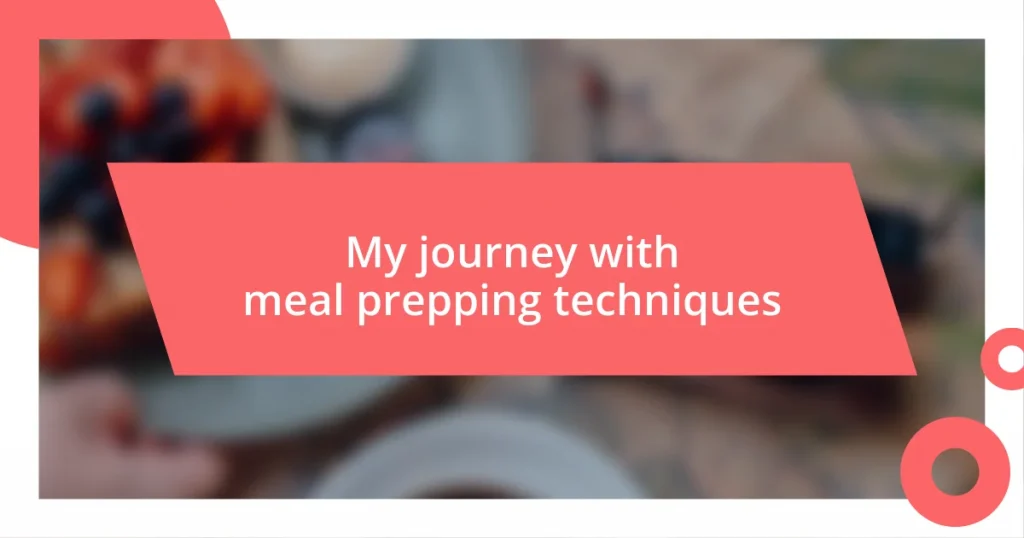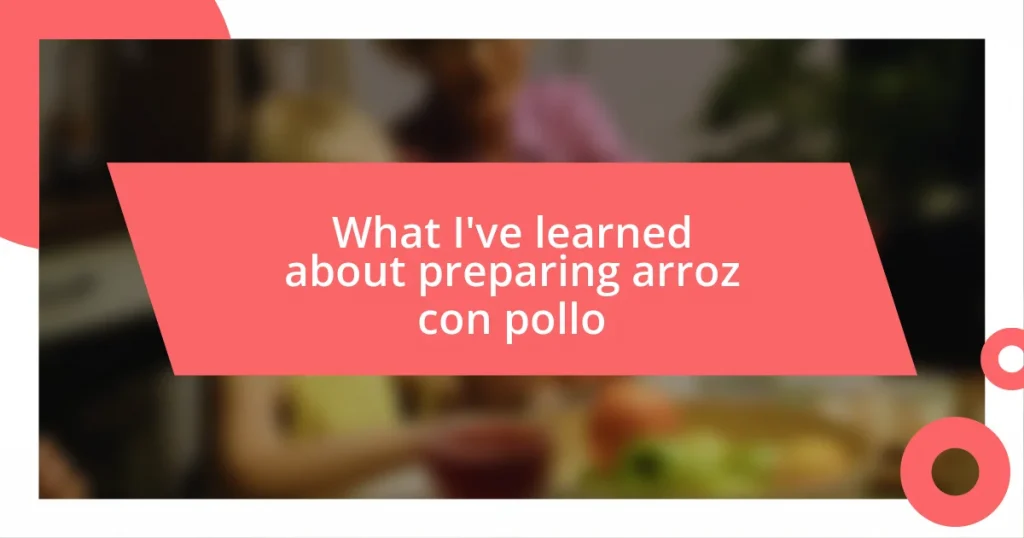Key takeaways:
- Meal prepping enhances efficiency by planning ahead, choosing versatile recipes, and organizing ingredients to reduce stress during the week.
- Creating balanced meals involves incorporating lean proteins, whole grains, vegetables, and healthy fats for improved energy and satisfaction.
- Proper storage in airtight containers and labeling meals helps maintain freshness, while freezing leftovers ensures quick access to nutritious meals later.
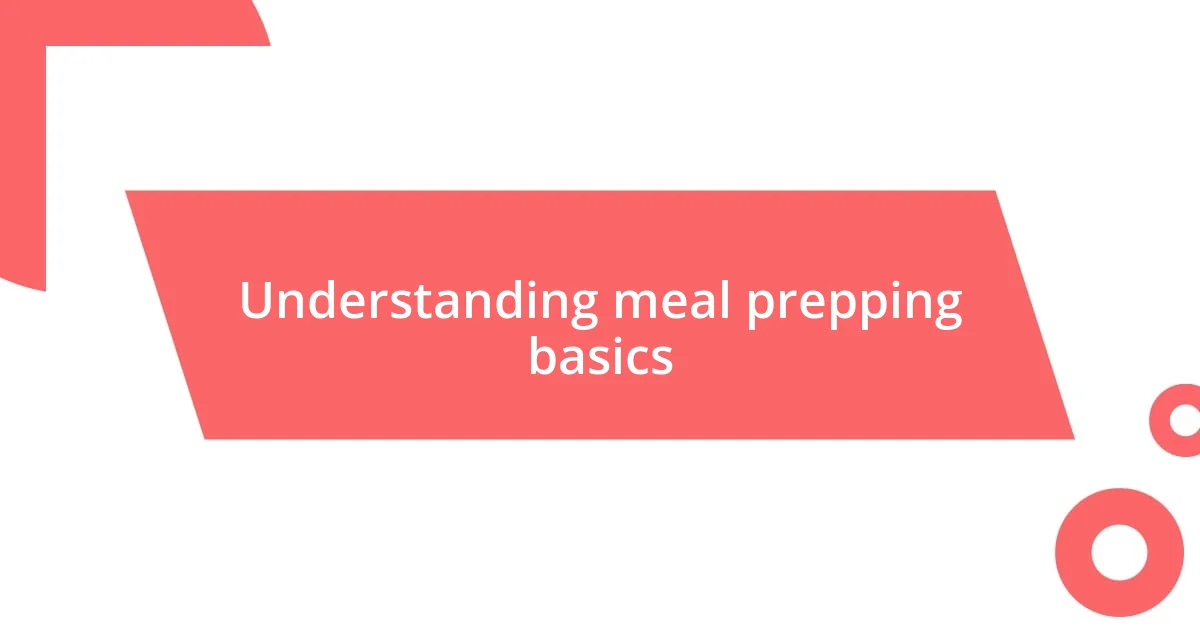
Understanding meal prepping basics
Meal prepping is all about planning and preparing meals in advance to save time and reduce stress during the week. When I first started, I remember feeling overwhelmed by the sheer number of options and the thought of dedicating a day to cooking. However, once I realized that meal prepping can be tailored to fit my schedule and preferences, it became a game-changer.
The basics revolve around choosing a set day for prepping, selecting manageable recipes, and organizing your groceries efficiently. I often think back to my initial attempts when I bought too many ingredients, leaving me overwhelmed. Now, I focus on making a few versatile dishes that I can use in different variations throughout the week, which not only saves money but also keeps things interesting!
One of my favorite tips is to embrace the power of storage containers; they’re essential for keeping everything fresh and easily accessible. Have you ever opened your fridge only to find a chaotic array of Tupperware? I’ve definitely been there! By investing in good containers and labeling them, meal prepping transforms from a daunting task into an enjoyable ritual that I genuinely look forward to each week.
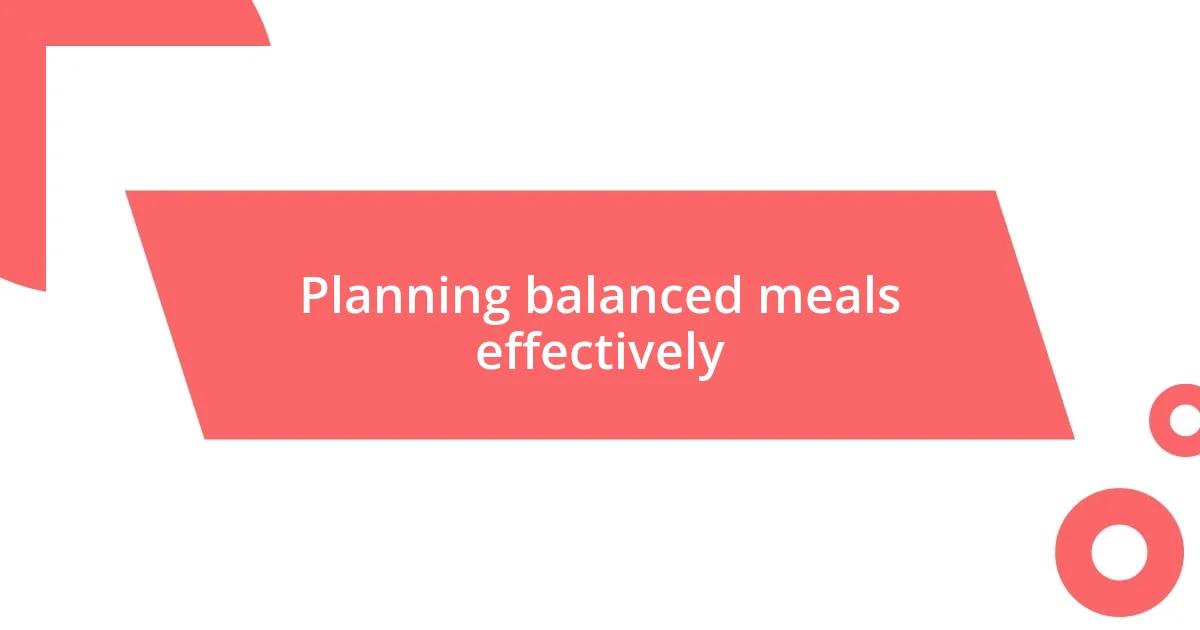
Planning balanced meals effectively
When it comes to planning balanced meals effectively, I find that a little foresight goes a long way. I remember the early days of my meal prepping journey, where I’d often throw together whatever ingredients I had without much thought. That approach left me feeling unsatisfied and, frankly, a bit lethargic. Now, I always prioritize incorporating a variety of food groups into each meal. This not only boosts my energy levels but also enhances my overall mood throughout the week.
To create balanced meals, I typically focus on these key components:
- Lean Proteins: Chicken, beans, or tofu for muscle recovery.
- Whole Grains: Quinoa or brown rice for sustained energy.
- Vegetables: Colorful options like spinach, peppers, and carrots to ensure I’m getting essential nutrients.
- Healthy Fats: Avocado or nuts for heart health and increased satiety.
I’ve learned that mixing and matching these components can lead to endless variations. It’s really satisfying to open my fridge and see a rainbow of choices, knowing I’m nourishing my body.
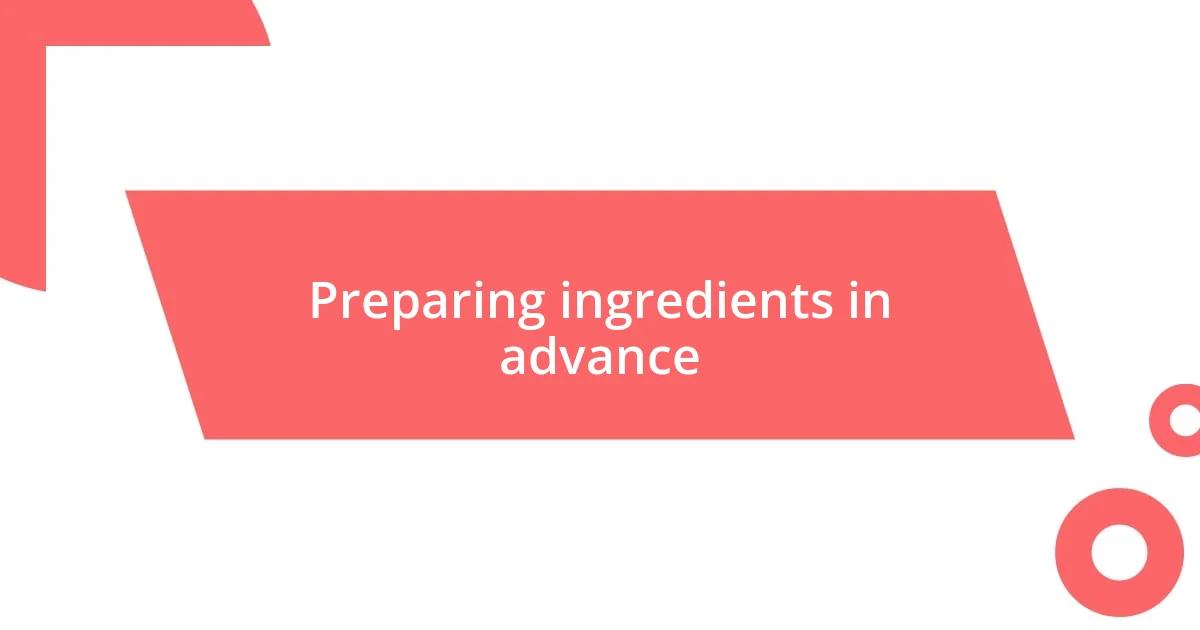
Preparing ingredients in advance
When it comes to preparing ingredients in advance, I find that it significantly reduces the chaos during hectic weekdays. One method I’ve adopted is chopping vegetables right after I bring them home from the grocery store. Honestly, there’s something therapeutic about slicing colorful veggies while listening to music. Not only does this save time later, but it also encourages me to eat healthier options because they are ready to go!
I also like to batch-cook grains like quinoa or brown rice at the beginning of the week. This little shift in my routine allows me to throw together meals in a matter of minutes. Previously, I’d only make a small pot for a single meal, but now, having a container full of grains in the fridge feels like having a secret weapon at my disposal. It’s amazing how much more freedom I have to create quick lunches or dinners, all thanks to that one little change.
Lastly, I can’t stress enough how marinating proteins in advance enhances flavor and tenderness. I remember a week when I prepped some chicken breasts with a zesty marinade, allowing them to soak overnight. The next evening, when I grilled them, the aroma alone made my mouth water. That experience taught me that preparing ingredients ahead of time not only saves time but also takes the flavor of my meals to new heights!
| Preparation Method | Benefits |
|---|---|
| Chopping Vegetables | Saves time, encourages healthier eating |
| Batch-Cooking Grains | Increases meal versatility and reduces cooking time |
| Marinating Proteins | Enhances flavor, improves tenderness |
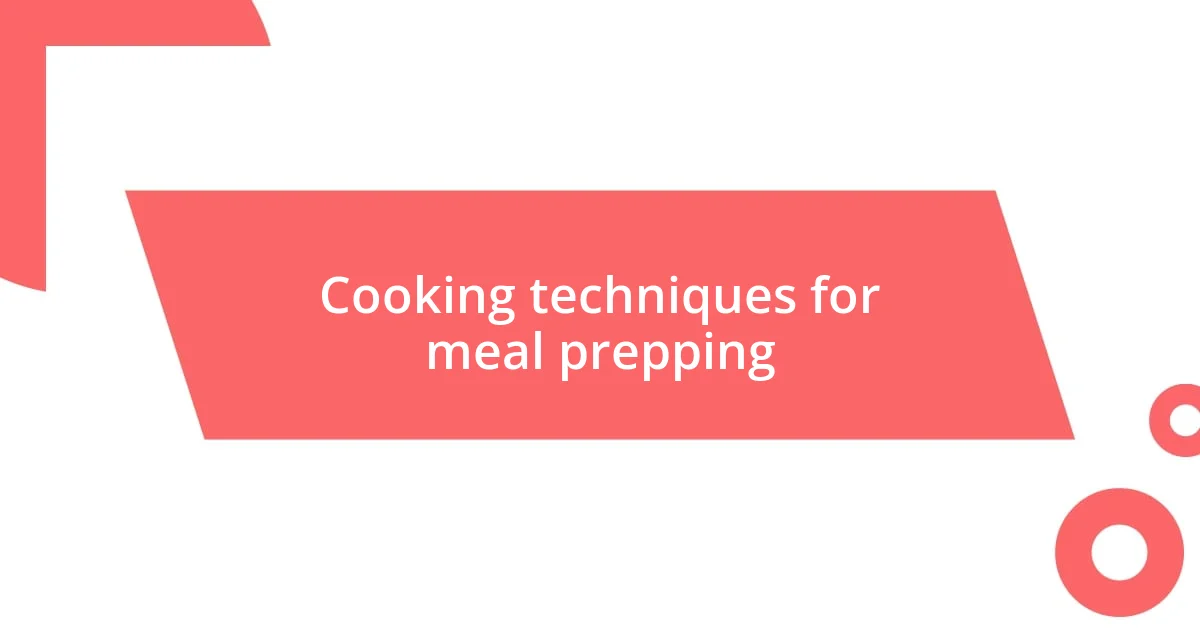
Cooking techniques for meal prepping
I’ve discovered that the right cooking techniques can really transform my meal prepping experience. For instance, I started using the oven for roasting vegetables instead of steaming them. The joy of walking into my kitchen and being greeted by the mouthwatering aroma of roasted Brussels sprouts and carrots is simply unbeatable. It adds depth to the flavor and makes the veggies so much more enjoyable to eat. Honestly, when was the last time you felt excited about steamed broccoli?
Another technique I swear by is the use of one-pot meals. It’s incredible how a single pot can hold all the ingredients for a delicious chili or a savory stew. Not only does it cut down on dirty dishes, but it also allows the flavors to meld beautifully as everything simmers together. I recall a particularly busy Sunday when I made a big batch of vegetable soup. It simmered while I tackled chores around the house, and the satisfaction of having a nutritious meal waiting for me at the end of the day was pure bliss.
I know that sometimes meal prepping can feel overwhelming, especially when you’re just getting started. That’s why I’ve embraced slow cooking as a game-changer. I remember being hesitant at first, thinking I’d end up with mushy meals. But once I tried a slow-cooked chicken curry, the tender meat and rich flavors won me over. It was one of those moments where I thought, “Why didn’t I do this sooner?” Using a slow cooker not only frees up my time but also gives me the freedom to explore exciting new recipes without feeling rushed.
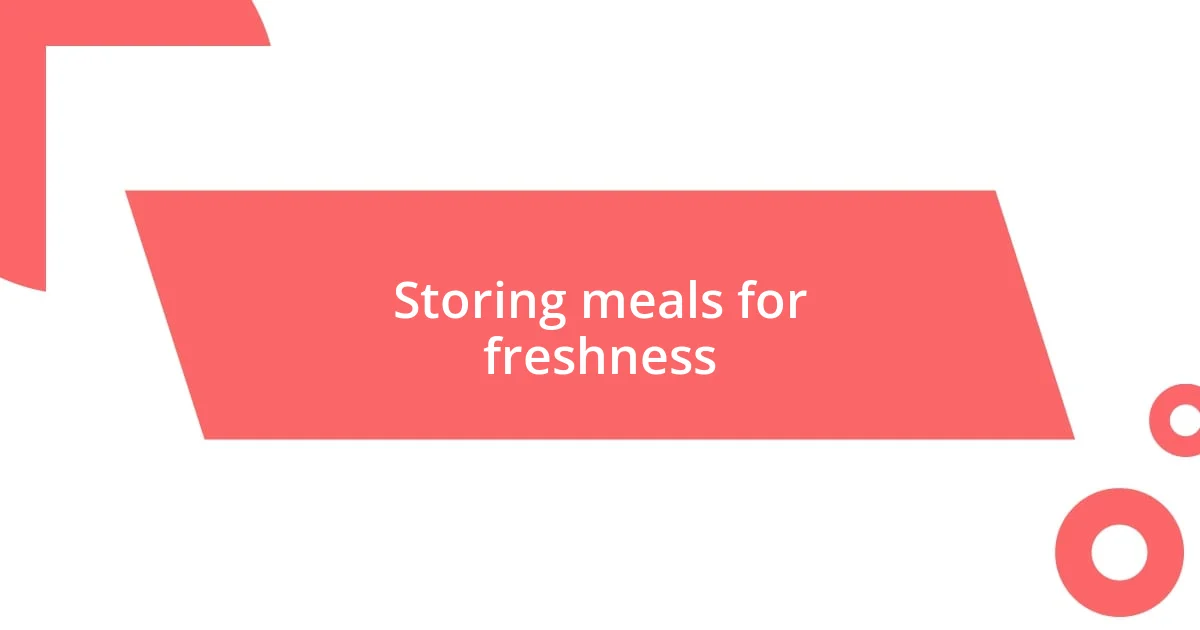
Storing meals for freshness
When it comes to storing meals for freshness, I always make sure to use airtight containers. I remember my early days of meal prepping, where I didn’t prioritize proper storage. It wasn’t long before I discovered that using flimsy plastic wrap left my meals soggy or dried out. Now, I can’t stress enough how investing in quality glass containers has changed my game. They not only keep food fresh longer but eliminate any worries about harmful chemicals leaching into my meals.
Freezing meals has become one of my favorite tricks. After a busy week, I typically find myself left with extra portions of soups or stews. Instead of letting them languish in the fridge, I portion them out and pop them in the freezer. It’s such a relief to know I have a nutritious meal ready to go for those days when cooking feels like a monumental task. Honestly, nothing beats the feeling of pulling out a homemade lasagna from the freezer on a chilly night. It’s like walking back in time to when I first made it, reliving that excitement all over again.
I’ve also learned the importance of labeling everything. In the past, I’d stored my meals without thinking and ended up in a game of culinary roulette—was that chicken from last week or the week before? Now, I simply use masking tape and a permanent marker to note not just the date, but also the contents. It might seem small, but having clarity about what’s in my fridge feels like a breath of fresh air. Plus, it sparks joy when I pull out a meal and think, “Yes, this is exactly what I wanted tonight!”










